Hi, what do you want to do?
Curated OER
A Cultural Palette
Students examine pieces of music and art that represent who they are. They study Haitian culture and traditions by performing the musical production "Once on the Island." They watch and discuss the film "The Nature of Music."
Curated OER
Creating a Bibliography
Third graders review the basic structure of a bilbliography and its importance in writing. They create a bibliography of materials used to complete a written report, and power point slide show and use the computer lab to create a final...
Curated OER
Language Arts: Creating Original Fiction
Fourth graders create fictional stories and demonstrate the use of various writing techniques. After selecting their main ideas, they find appropriate graphics to use as illustrations. In groups, 4th graders apply Hyperstudio in...
Curated OER
Reporting Live From...
Students examine the many disasters in West Virginia. In this US history activity, students write about and give an oral presentation of one of the disasters as if they were reporters.
Curated OER
Growth in A City Neighborhood
Young scholars take the "role" of city planner. They overlay a map of one area of the city in the past, present, and projected future project. Students discuss reasons for selecting the special features of the area. The lesson refers...
Curated OER
Lifestyles of the Tribe, or Tomorrowland?
Eighth graders identify with and analyze through writing various Indian cultural values and how they fit in the modern world. Students organize data utilizing Educational software programs and present their opinions and inferences in a...
Curated OER
The Russian View of Territorial Encroachment
Twelfth graders produce a map illustrating the current NATO members, future nations, and nations that have applied for membership. They research current information regarding NATO, and the Russian viewpoint about the expansion of NATO....
Curated OER
Cyber Vacation
Students will look up information concerning their destination. The information should include their destination; the monetary system of the country; cost of hotels; airplane fares, etc. They look at ways to improve o searches as a...
ReadWriteThink
Read Write Think: Using Science Texts to Teach the Organization of Nonfiction
Contains plans for three lessons that use science textbooks to teach about the organizational features of nonfiction such as labels, captions, headings, and fonts. In addition to objectives and standards, this instructional plan contains...
Concord Consortium
Concord Consortium: Science of Atoms and Molecules: Nucleic Acids and Proteins
Through this activity, students work with macromolecules, proteins and nucleic acids. The focus is on the atomic structure of proteins, how linear polymers are made, and the surface charges of the resulting polymers. . Multiple-choice...
Utah Education Network
Uen: Introducing Text Structures in Writing 5th Grade
This lesson engages students in learning about text structures. Graphic organizers are provided to assist students in planning writings that have the following text structures: problem and solution; sequence; cause and effect; and...
Bryn Mawr College
Serendip: Who Took Jerell's I Pod? An Organic Compound Mystery
Brief text summary of what students learn in the Who Took Jerell's iPod? lab along with links to download Student Handouts and Teacher Preparation Notes in PDF or Word formats. Students are challenged to solve a mystery by testing for...
Utah Education Network
Uen: Graphic Organizers Bring About Good Science Read/writing
This lesson uses graphic organizers to engage students in reading comprehension strategies for informational text in science. Venn Diagram, Hierarchy, Time Line, Cluster Diagram, and Flow Chart reproducible pages are included with the...
National Humanities Center
National Humanities Center: America in Class: America in the 1920s: Religion & Science
The National Humanities Center presents collections of primary resources compatible with the Common Core State Standards - historical documents, literary texts, and works of art - thematically organized with notes and discussion...
Other
Nelson Science: Healthy Ecosystems: The Needs of Living Things [Pdf]
A 4-page section of the Grade 7 Nelson Science and Technology Perspectives textbook. It looks at what organisms need to survive, specifically sunlight, air, water, and food. This is a visually-rich text with tips to help students'...
CommonLit
Common Lit: "Let's See What You're Made Of" by Bird Brain Science
This informational, scientific text explains how cells, the smallest unit of a living organism, make up every living thing in the world. As you read, take notes on the comparisons used in the text to explain how cells work. [Free account...
CPALMS
Cpalms: Graphic Organizers for Science Reading/writing
This resource provides multiple graphic organizers for reading and writing in the science content area. [Registration is required.]
Georgia Department of Education
Ga Virtual Learning: Biology: Protists and Fungi
A multi-media learning modlue immersing students in the kingdoms of fungi and protists. Activities include informational text, video clips, animations, and student assignments.
University of Wisconsin
University of Wisconsin: Writing Center: Formatting Science Reports
This site outlines the necessary elements of a scientific report. The site is broken down into the follow segments: title, abstract, introduction, methods, results, and discussion. Within each section is a contents section as well as a...
Scholastic
Scholastic: Writing With Scientists With the American Museum of Natural History
Follow this six-step method and you'll have a good understanding of what a good scientific research paper involves and how it is organized. There are plenty of samples for you to look at. This explanation is also very helpful for...
Utah Education Network
Uen: Enlightening Explorations, Part Iii
This lesson plan contains the following labs: Rainbows, Refraction with Prisms, and What Color Is It? Students will study light by reading various nonfiction texts and viewing a video lesson plan. Then students will engage in the...
CK-12 Foundation
Ck 12: Cell Biology
[Free Registration/Login may be required to access all resource tools.] Read grade-level texts, complete activities, and take assessments about cell biology.
PBS
Pbs Learning Media: The Worm Turns Lesson Plan: Molly of Denali
This lesson, based on the animated story "The Worm Turns" from the PBS KIDS series MOLLY OF DENALI, helps children use several types of informational texts to gather facts. In the video, Molly and her friends are frightened after hearing...
Polk Brothers Foundation Center for Urban Education at DePaul University
De Paul University: Center for Urban Education: Classify and Summarize Information [Pdf]
This learning module contains a link to graphic organizers that will help students categorize content and comprehend short and extended texts. The graphic organizers are designed to be applied to reading nonfiction passages in science...
















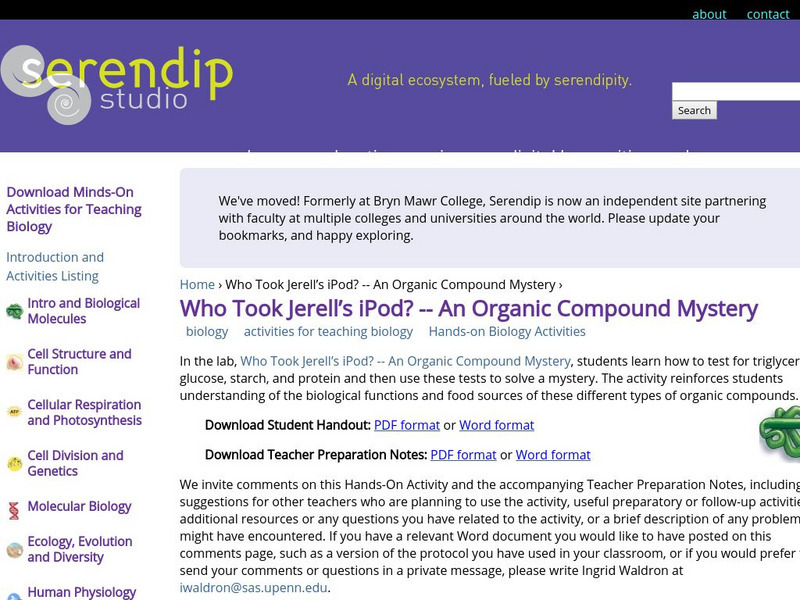
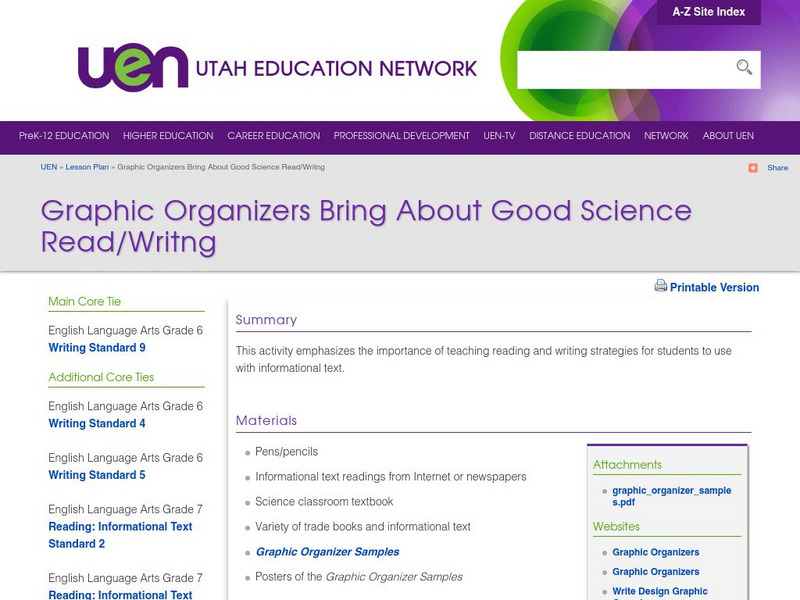
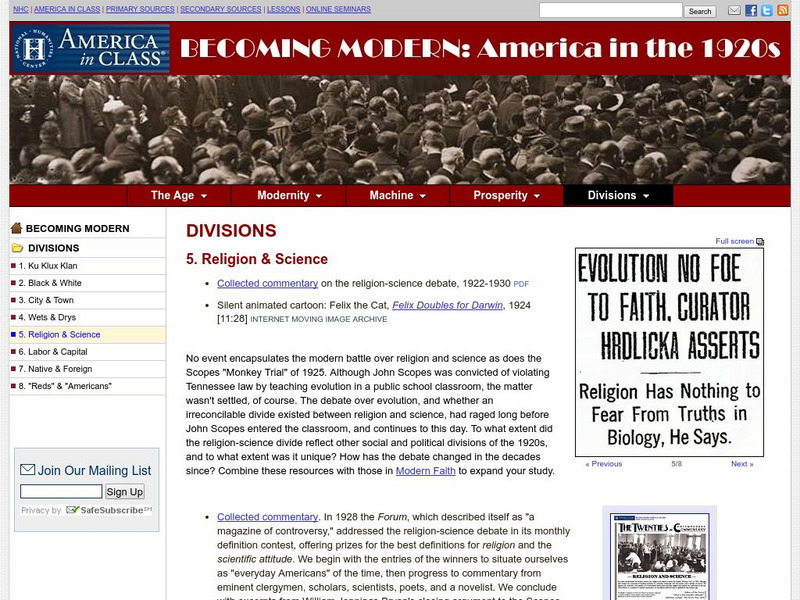

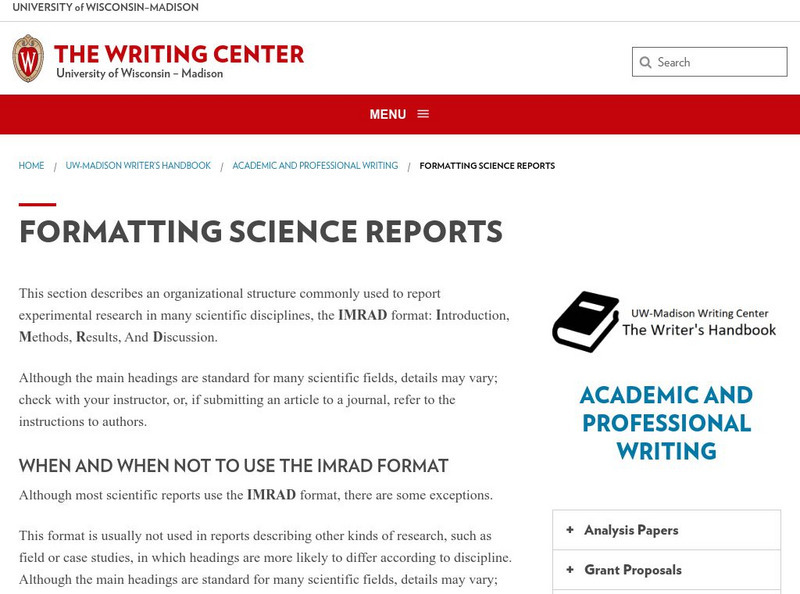
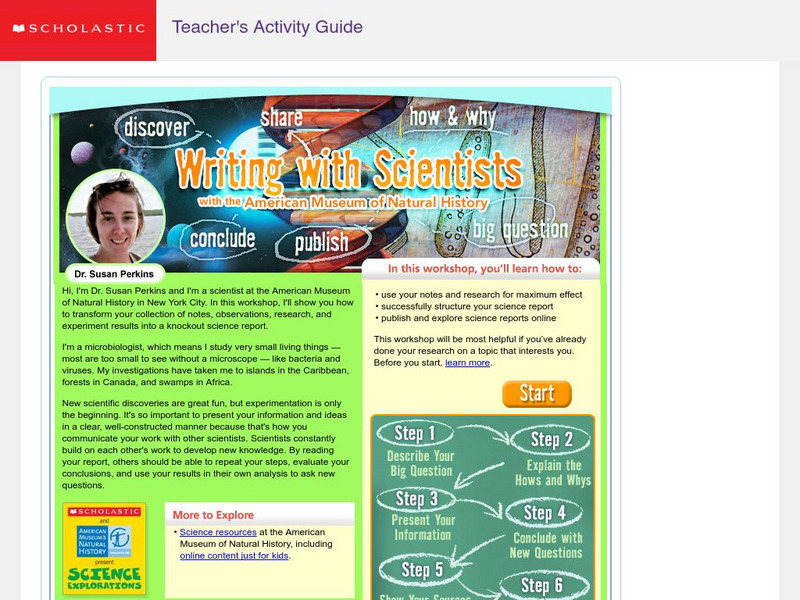


![De Paul University: Center for Urban Education: Classify and Summarize Information [Pdf] Unit Plan De Paul University: Center for Urban Education: Classify and Summarize Information [Pdf] Unit Plan](https://content.lessonplanet.com/knovation/original/78057-7ba90e0b8b82fde8e26d306a4af31f79.jpg?1661787062)